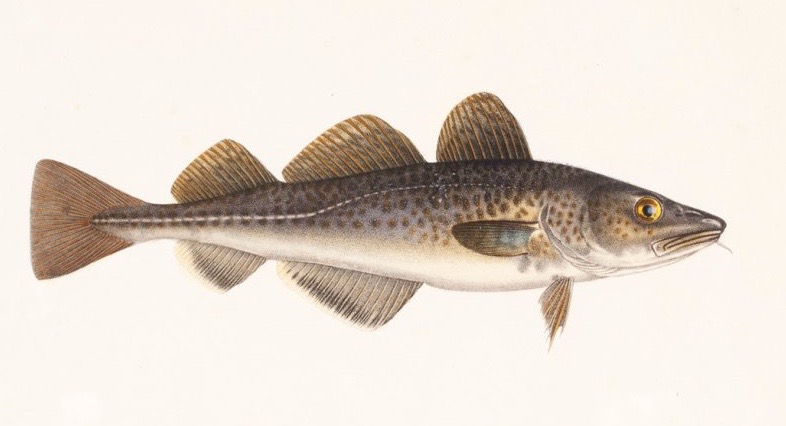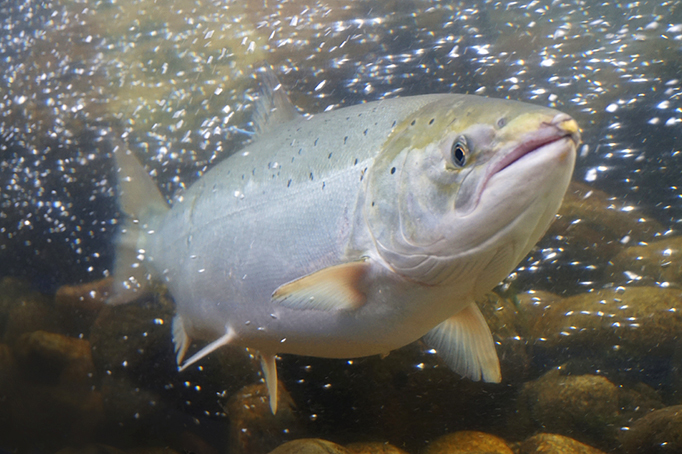Itämeren ympäristöjärjestöjen kirje komissaarille itäisestä turskasta
–
2019-06-17 Dear Commissioner Vella Emergency measures for Eastern Baltic cod stock for the remainder of 2019 The Eastern Baltic cod stock has been deteriorating for many years. The latest ICES1…

2019-06-17
Dear Commissioner Vella
Emergency measures for Eastern Baltic cod stock for the remainder of 2019
The Eastern Baltic cod stock has been deteriorating for many years. The latest ICES1 advice confirms that the Eastern Baltic cod stock is in a critical state.
In a letter to the Commission on 14th February 2019 NGOs recommended the introduction of emergency measures in order to safeguard the stock in accordance with Common Fisheries Policy (CFP) article 12, including closing the fishery immediately to minimize all further mortality and maximize spawning outcome.
In a letter to fisheries ministers from the Baltic region on 11th April 2019 NGOs highlighted that Member State’s emergency measures in accordance with CFP article 13 were needed and were justified. That letter highlighted the eastern Baltic cod benchmark report published by ICES2 on 5th April.
The ICES advice for Baltic stocks published on 29th May confirmed that eastern cod was in a critical state. The scientific justification for immediate emergency measures is clear and to the best of our knowledge is not seriously disputed. We therefore ask the Commission and EU fisheries ministers to act to safeguard what remains of the Eastern Baltic cod stock now without any further delay.
It is important to note in the current critical circumstances, that the CFP precautionary approach to fisheries management3, defined in article 4.1.(8), makes clear that “…the absence of adequate scientific information should not justify postponing or failing to take management measures to conserve target species, associated or dependent species and non-target species and their environment”
There are a number of elements that we believe must be addressed in emergency measures for Eastern Baltic cod stock for the remaining part of the year 2019. These include but are not limited to the following;
1. Immediate closure of the fishery targeting eastern Baltic cod.
The scientific justification for immediate emergency measures is provided by the eastern Baltic cod benchmark report4 published by ICES on 5th April and the advice on eastern Baltic cod5 published by ICES on 29 May.
The benchmark report clearly indicated that the stock is in a critical state: with clear evidence of increased natural mortality, reduced growth and reduced reproductive capacity resulting in an impaired recruitment. The ICES benchmark report further stated: “…analyses showed that even with FMSY at 0 the SSB would not be kept above Blim (98 000 t) in the long term, with 95% probability.”
The, “ICES advice on fishing opportunities”, states that “ICES advises that when the precautionary approach is applied, there should be zero catch in 2020. This advice applies to all catches from the stock in subdivisions 24–32.” 6 And in “issues relevant for the advice”: “At the present low productivity the stock is estimated to remain below Blim in the medium-term (2024), even at no fishing. Furthermore, fishing at any level will target the remaining few commercial sized (≥35 cm) cod; this will deteriorate the stock structure further, and reduce its reproductive potential.”
Closing the directed fishery should mean that there is no need for a specific spawning closure (area and time) because the entire area and time are covered by the closure. However there are other aspects of a spawning closure that will also require to be addressed with regard to bycatch of eastern Baltic cod in other fisheries and in order to secure undisturbed spawning. We address those in the sections below.
We note that spawning for eastern Baltic cod takes place right now, from May to 31st August. If action is taken quickly, i.e. measures in place by 1st July, it can have a beneficial effect on spawning and therefore on the future stock recovery.
ACTION: We ask the Commission and fisheries ministers to immediately close the fishery directly targeting eastern Baltic cod
2. Immediate closure of SD 24 to all commercial cod fishing is required to prevent catch of eastern Baltic cod in that subdivision.
ICES advice clearly states that; “This advice applies to all catches from the stock in subdivisions 24–32.” 7 Fishing for western Baltic cod in SD 24 for the remainder of 2019 will mean a relatively substantial catch of eastern Baltic cod8. That will deteriorate the eastern Baltic cod stock structure further and reduce its reproductive potential, when it could instead be adding to the potential SSB and contributing to the stock regrowth. It will also disturb some eastern cod spawning.
The ICES advice on eastern Baltic cod makes it clear that it “…applies to all catches from the stock in subdivisions 24–32” and that “…fishing at any level will target the remaining few commercial sized (≥35 cm) cod; this will deteriorate the stock structure further, and reduce its reproductive potential.
The ICES Special Request advice for EB cod9 estimates that 1823 tonnes of eastern Baltic cod is expected to be taken in SD 24 in the second half of the year 2019.
ICES Special Request advice also notes that: “..expansion of the closure to SD 24 may have some benefits to eastern Baltic cod recruitment due to undisturbed spawning, though the survival of eastern Baltic cod eggs spawned in this area is considered to be generally low. Quantitative analyses on the relative contribution of spawning in SD 24 to eastern Baltic cod recruitment are currently lacking.”.
ACTION: As an emergency measure, we ask the Commission and fisheries ministers to immediately close SD24 to all commercial cod fishing.
3. Immediate closure of the Eastern Baltic cod spawning areas to all fisheries with significant cod by-catch for the remaining duration of the spawning period.
There is likely to be a relatively high bycatch of eastern Baltic cod in plaice and other flat fish fishery in the eastern cod spawning area during the spawning period. That catch and the disturbance of spawning are the combined reasons why there should be immediate closure of any fishery with a significant cod bycatch in SD 24, 25 and 26 until 31st August.
Attention to that potentially substantial bycatch is clearly required as part of the emergency measures. This point is discussed further in section 4 below.
According to ICES Special Request advice on Eastern Baltic cod10: “Most of the landings of eastern Baltic cod come from mixed demersal fisheries. Fifteen métiers were found to have significant landings of cod. Two of these métiers account for 82% of the total cod landings in SDs 24–28 in 2018 (bottom trawl with > 105 mm mesh size and a 120 mm Bacoma exit window, and gillnets with 110–156 mm mesh size). These métiers are considered to target cod. Cod constituted approximately 40–50% of their annual landings, the other species landed were mostly flatfish. A further four métiers target cod and contributed approximately 15% of the total annual landings (bottom trawls with > 115 mm mesh size and longlines).”
Whilst the ICES special request response was not able to put firm figures on the bycatch of cod that takes place during a Baltic fishery targeting plaice and other flat fish, it does make apparent that there is likely to be a very substantial bycatch of cod.
ACTION: As an emergency measure we ask the Commission and fisheries ministers for an immediate closure of the Eastern Baltic cod spawning areas to all fisheries with significant cod by-catch for the full remaining duration of the spawning period.
4. Substantially reduce the bycatch of eastern Baltic cod by the directed plaice and flatfish fishery
We consider that in order to be consistent with the scientific knowledge of the state of the eastern cod stock all catches of eastern cod, including its bycatch, should be reduced to zero or as close to zero as is reasonably possible.
A significant bycatch of eastern cod can be anticipated from the flatfish fisheries during the rest of 2019. Reducing that bycatch to as close to zero as possible is a challenge that needs to be faced. The ICES data is not clear on what volumes of bycatch can be expected from this fishery, they just give indications that it will be substantial.
ACTION: We ask the Commission and fisheries ministers to ensure that all action is taken to reduce that bycatch of eastern cod to a minimum.
5. Consideration to closing the eastern cod spawning area to fishing of any kind to allow for complete undisturbed spawning of the stock for the full remaining duration of the spawning period.
The potential benefits of undisturbed spawning deserves more attention. We note a recent presentation on spawning closures by Mr. Uwe Krumme, Thunen Institute to BSAC on 14 May 2019,11 which stressed the potential benefits of undisturbed spawning. Amongst other conclusions it noted that cod has a complex spawning behavior, which also occurs in the water column and that undisturbed spawning can have benefits to cod stock recovery.
ACTION: As an emergency measure, consider closing SD 24, 25 and 26 from all commercial fishing activity until 31st August.
6. A long term rebuilding plan for Eastern Baltic cod is needed and should be developed as soon as possible.
In order to bring back future economic profits from cod fishery in the Baltic Sea region, consideration and priority should be given to the importance of cod for the Baltic Sea ecology and that the stock should achieve normal growth, size and age composition before fishing resumes, and thereafter. All strategies should be objective-oriented, with a clear stated objective towards rebuilding the stock, and be subject to review and evaluation of the progress towards that goal.
Rigorous control and enforcement are needed for both current and future regulations, not least so that public confidence in fisheries policy can be restored.
ACTION: We ask the Commission to immediately convene a regional workshop with stakeholders to develop a rebuilding plan for eastern Baltic cod.
ACTION: As an emergency measure, we ask the Commission to support, and for Member States to implement, an immediate introduction of comprehensive at-sea monitoring (eg. remote electronic monitoring and/ or observers) in all fleets that are considered medium – very high risk for catch and discards of cod in the Baltic.
With regards,
Lindsay Keenan, Fisheries Policy Officer, The Fisheries Secretariat
Nils Höglund, Fisheries Policy Officer, Coalition Clean Baltic
Conrad Stralka, Director, BalticSea2020
Andrzej Bialas, Fisheries Policy Officer, Oceana in Europe
Tapani Veistola, Senior Advisor, Finnish Association for Nature Conservation
Ottilia Thoreson, Director, WWF Baltic Ecoregion Programme
Rebecca Hubbard, Program Director of OurFish
NB: We will forward this letter to Members States Ministers for their information.
1 http://ices.dk/sites/pub/Publication%20Reports/Advice/2019/2019/cod.27.24-32.pdf
2 ICES. 2019. Benchmark Workshop on Baltic Cod Stocks (WKBALTCOD2). ICES Scientific Reports. 1:9. 310 pp.
3 Regulation (EU) No 1380/2013 of the European Parliament and of the Council of 11 December 2013 on the Common Fisheries Policy. Article 4.1 (8)
4 ICES. 2019. Benchmark Workshop on Baltic Cod Stocks (WKBALTCOD2). ICES Scientific Reports. 1:9. 310 pp.
5 http://ices.dk/sites/pub/Publication%20Reports/Advice/2019/2019/cod.27.22-24.pdf
6 http://ices.dk/sites/pub/Publication%20Reports/Advice/2019/2019/cod.27.24-32.pdf
7 http://ices.dk/sites/pub/Publication%20Reports/Advice/2019/2019/cod.27.24-32.pdf
8 http://ices.dk/sites/pub/Publication%20Reports/Advice/2019/2019/cod.27.22-24.pdf
9 http://ices.dk/sites/pub/Publication%20Reports/Advice/2019/Special_Requests/eu.2019.11.pdf
10 http://ices.dk/sites/pub/Publication%20Reports/Advice/2019/Special_Requests/eu.2019.11.pdf
11 http://www.bsac.dk/getattachment/Meetings/BSAC-meetings/BSAC-Executive-Committee-and-General-Assembly/20190514_Cod_spawningUweKrumme140519.pdf.aspx?lang=en-GB
Lisätietoja

Toiminnanjohtaja Tapani Veistola
- +358 400 615 530
- tapani.veistola(a)sll.fi
